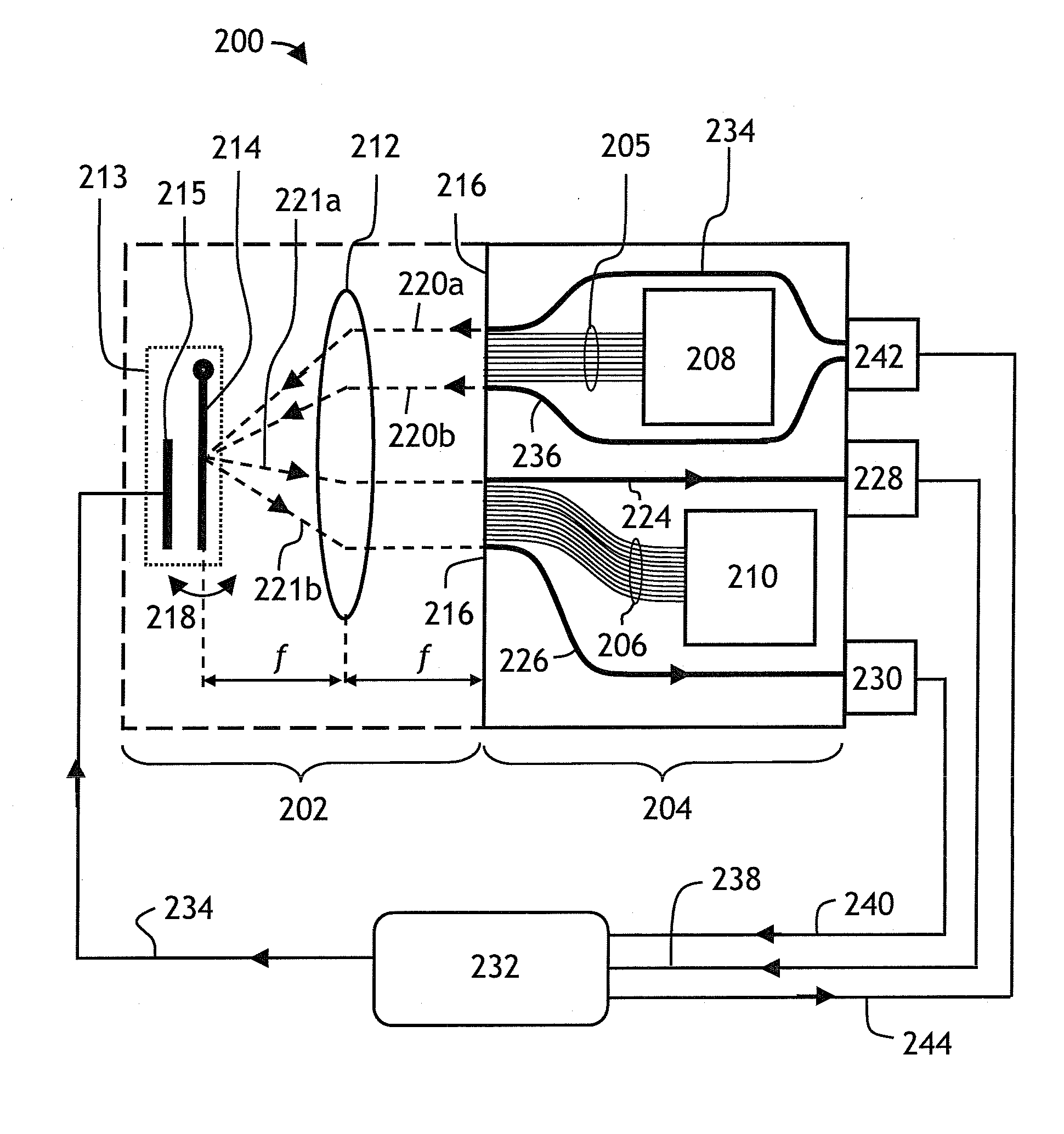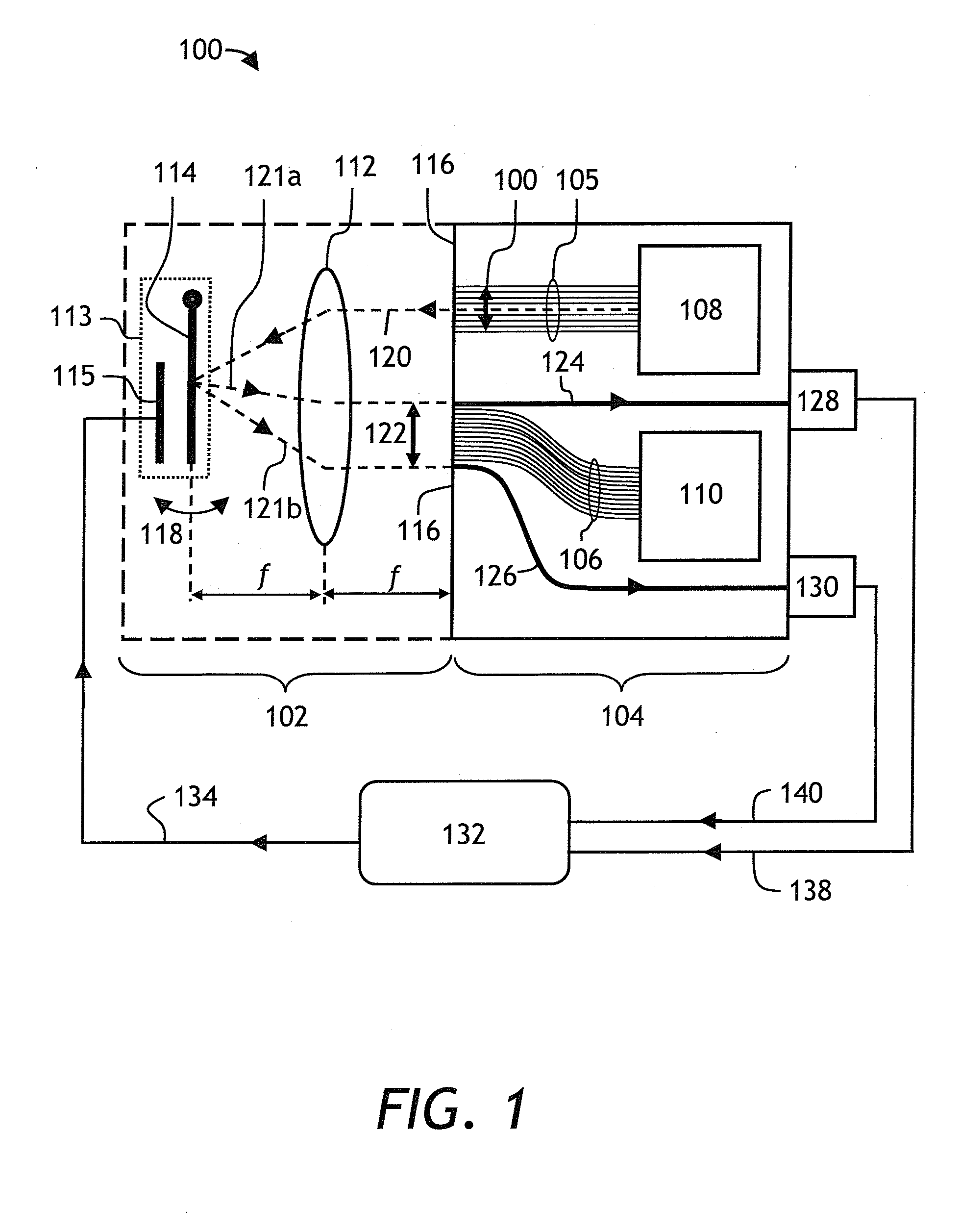Method And Apparatus For Referencing A MEMS Device
a technology of mems mirror and reference device, which is applied in the field of optical devices, can solve the problems of mechanical stresses deflecting the mirror, the tilt angle drift and the long-term instability of the mems mirror
- Summary
- Abstract
- Description
- Claims
- Application Information
AI Technical Summary
Benefits of technology
Problems solved by technology
Method used
Image
Examples
Embodiment Construction
[0049]While the present teachings are described in conjunction with various embodiments and examples, it is not intended that the present teachings be limited to such embodiments. On the contrary, the present teachings encompass various alternatives, modifications and equivalents, as will be appreciated by those of skill in the art. In FIG. 1 and FIG. 2, like numerals refer to like parts.
[0050]Turning now to FIG. 1, a hybrid MEMS-PLC optical module 100, usable for switching information-carrying optical signals in an optical network, is shown. The module 100 consists of a free space optical part 102 and a PLC part 104, wherein the free space optical part 102 provides optical switching between waveguides of an emitting waveguide array 105 and waveguides of a receiving waveguide array 106 of PLC 104. Generally speaking, PLC 104 may carry out a number of additional functions performed on input and output optical signals, such as wavelength multiplexing and demultiplexing, and, or attenu...
PUM
| Property | Measurement | Unit |
|---|---|---|
| voltage | aaaaa | aaaaa |
| power | aaaaa | aaaaa |
| angle of tilt | aaaaa | aaaaa |
Abstract
Description
Claims
Application Information
 Login to View More
Login to View More - R&D
- Intellectual Property
- Life Sciences
- Materials
- Tech Scout
- Unparalleled Data Quality
- Higher Quality Content
- 60% Fewer Hallucinations
Browse by: Latest US Patents, China's latest patents, Technical Efficacy Thesaurus, Application Domain, Technology Topic, Popular Technical Reports.
© 2025 PatSnap. All rights reserved.Legal|Privacy policy|Modern Slavery Act Transparency Statement|Sitemap|About US| Contact US: help@patsnap.com



